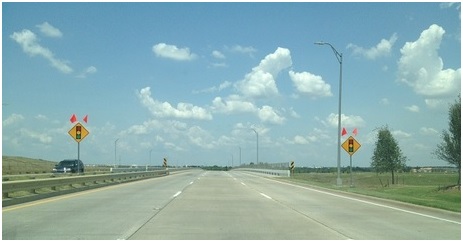
There was a time when a man could traverse the Texas prairie without worrying about traffic. It was a time when a lone swain could wander the countryside in quiet contemplation of a goal he himself had not yet identified without the constant roar of nearby highway corridors. A time when the wide-open country beckoned to restless laborers who dreamt of a place less crowded than their east coast slums.
That time was 2009. And the place was north Arlington.
When I moved to Texas, I learned about the state’s extensive network of Farm to Market roads. If you’re not from Texas, farm and ranch roads aren’t quite state highways, but they’re also not quite city streets. They were originally built to connect farms and ranches to nearby communities. When I arrived at my job in Houston, I had some questions.
“If they’re considered rural roads,” I asked. “How come the Farm to Market road outside the station is eight lanes wide and runs along one of the tallest buildings in town?”
“I guess a lot of them aren’t really rural anymore,” was the consensus response.
That brings us to north Arlington. Back in 2009, when I first moved to north Texas, you could either sit in traffic on Highway 360 in the afternoon or you could exit at Trinity and get on FM 157.
FM 157 was great. It was six lanes and there was a long stretch near the Trinity River where there wasn’t any development to slow you down.
Then a company, Huffines, bought that property announced a plan to build 3,500 homes. Things started to change quickly.
First, I watched helplessly as the speed limit dropped from 55 to 50.
“Oh, this is how it starts,” I muttered to myself.
Next, work crews started digging up the curb and laying out side streets.
“There’s trucks everywhere!” I said to myself, gleefully ignoring the dozens of garbage trucks that had always used FM 157 to get to the nearby landfill every day.
But then, as often happens in life, some archaeologists came to the rescue.
A team from UT-Arlington found some dinosaur fossils at the site, and the development slowed while Huffines let them poke around for a while.
Ultimately, their time would run out when, I assume, they got run off the property because they kept leaving whips and fedoras all over the place and exchanging gunfire with Nazis.
But the housing market was still in the tank. Surely, that would stall the transformation of this idyllic six-lane highway into a malevolent beast of a six-lane highway with traffic lights.
The economy would improve, though, and work resumed, culminating earlier this summer when I saw construction crews installing traffic lights at two intersections.
I don’t blame Huffines, mind you. In fact, you’ve got to respect a developer who can convince people to buy homes on a flood plain that’s also directly across the street from a landfill. Seriously!
Soon, an electronic message board appeared, warning drivers to expect the traffic lights to switch on at any moment. The only way to instill a greater sense of foreboding would be if TxDot hired a single cellist to sit by the side of the road constantly droning in minor chords. [An aside: isn’t it great that you can google “creepy cello music” and have it return three million items? Sure, it’s not flying cars or anything, but the future is here!]
Today, the cellist would have been replaced with a timpani when I approached these signs:

Immediately, on the very first trip through, one of the lights turned yellow just as I approached, forcing me to stop for upwards of 12 seconds so a single car could pull out. A single car.
British historian Christopher Dawson once said, “As soon as men decide that all means are permitted to fight an evil, their good becomes indistinguishable from the evil they set out to destroy.”
Sure, we have order. But at what cost?!